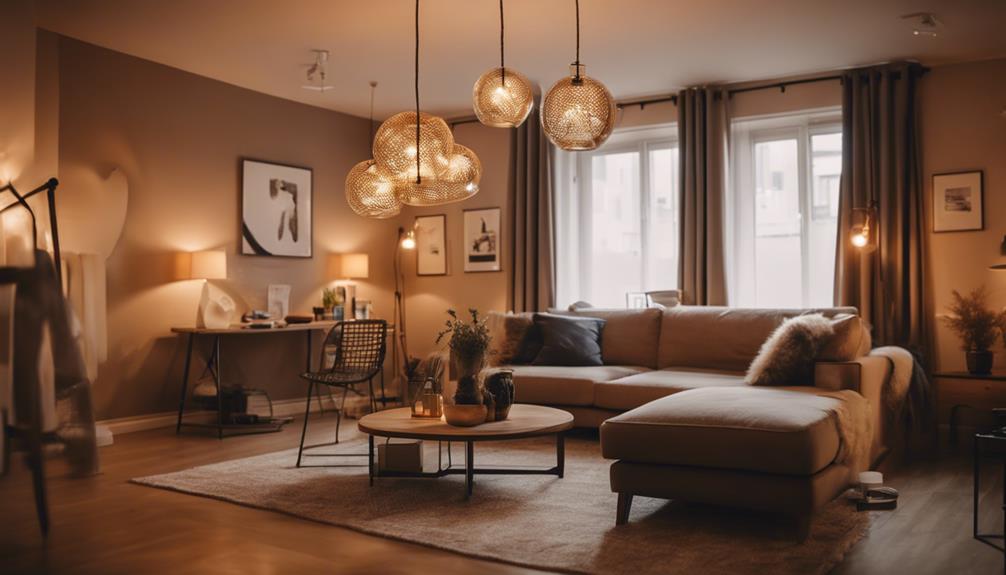Choosing the Perfect Pendant Lighting for Your Home

Pendant lighting can transform the ambiance and functionality of any room in your home. Whether you want to make a bold statement in your dining area or create a cozy atmosphere in your bedroom, selecting the right pendant lighting involves considering several factors. This guide will help you choose the perfect pendant lighting for your home, focusing on style, size, placement, and functionality.
1. Understand Your Style
Pendant lights come in a wide variety of styles, including contemporary, industrial, traditional, and minimalist. Consider the overall style of your home and choose a pendant light that complements it. For example, a rustic pendant light would look great in a farmhouse-style kitchen, while a contemporary pendant light would be perfect for a modern living room. The material of the pendant light shade can affect the amount and quality of light that it emits. Glass shades will allow the most light to pass through, while fabric shades will create a softer, more diffused light. Metal shades can reflect light, making them a good choice for task lighting.
- Contemporary: Sleek designs with clean lines and modern materials like glass and metal.
- Industrial: Raw, unfinished looks with materials such as iron, steel, and reclaimed wood.
- Traditional: Elegant and classic designs, often featuring intricate details and materials like bronze or brass.
- Minimalist: Simple and understated designs with a focus on functionality and simplicity.
2. Determine the Right Size
The size of your pendant light should be proportionate to the size of the room and the space where it will be hanging. A large pendant light can overwhelm a small space, while a small pendant light may get lost in a large room. A general rule of thumb is to add the length and width of the room (in feet) to get the diameter (in inches) of the ideal pendant light. For example, a room that is 12 feet by 10 feet would look best with a pendant light that is about 22 inches in diameter.
- For Dining Tables: The pendant should be about 12 inches narrower than the width of the table.
- For Kitchen Islands: Use multiple smaller pendants, spacing them evenly for balanced lighting.
3. Consider Placement and Height
Proper placement and height are crucial for both aesthetics and functionality. Pendants should be hung at the right height to avoid glare and provide adequate illumination.
- Over Dining Tables: A general rule of thumb is to hang pendant lights 30-36 inches above a countertop or table.
- In Living Areas: Ensure the bottom of the pendant is at least 7 feet above the floor.
- In Hallways or Foyers: The pendant should be centered and hung high enough to avoid head bumps.
4. Evaluate Functionality
Think about the primary purpose of the pendant lighting. Is it for ambient lighting, task lighting, or decorative purposes?
- Ambient Lighting: Choose pendants that provide broad, diffused light to illuminate the entire room.
- Task Lighting: Opt for pendants with focused light for areas where specific tasks are performed, such as reading or cooking.
- Decorative Lighting: Select eye-catching designs that serve as focal points or add a touch of elegance to your decor.
5. Select the Right Bulbs and Fixtures
The type of bulb and fixture you choose can impact the overall effect of your pendant lighting. Pendant lights can be used with a variety of bulbs, including incandescent, LED, and fluorescent. Choose a bulb that provides the right amount of light and that is compatible with the fixture.
- LED Bulbs: Energy-efficient and long-lasting, available in various color temperatures.
- Edison Bulbs: Offer a vintage look with a warm, ambient glow.
- Dimmable Fixtures: Dimmer switches allow you to adjust the brightness of your pendant lights, which can be helpful for creating different moods and atmospheres in your home based on the time of day or occasion.
6. Coordinate with Other Lighting
Ensure your pendant lighting works well with other light sources in the room. Layering your lighting—combining pendant lights with ceiling lights, floor lamps, and wall sconces–creates a balanced and well-lit space.
7. Number of Lights
Pendant lights can have one light or multiple lights. The number of lights you need will depend on the size of the space and the amount of light you need. A single pendant light may be sufficient for a small breakfast nook, while multiple pendant lights may be needed to illuminate a large kitchen island.
Conclusion
Choosing the perfect pendant lighting for your home involves more than just picking a design you like. By considering your style, size, placement, functionality, and coordination with other lighting, you can find pendant lights that enhance your home's beauty and practicality. Take your time to explore different options and consult with lighting professionals if needed to make the best choice for your space.